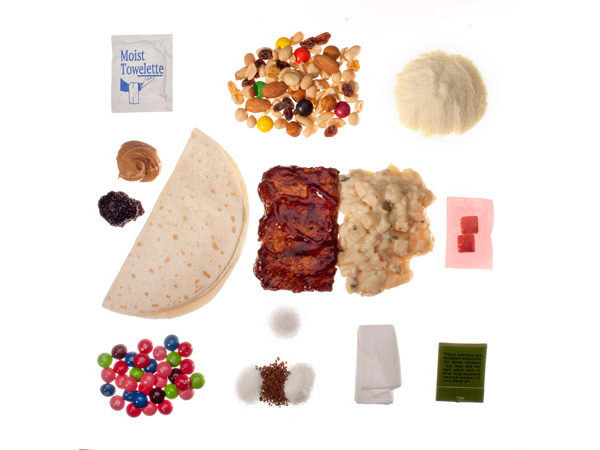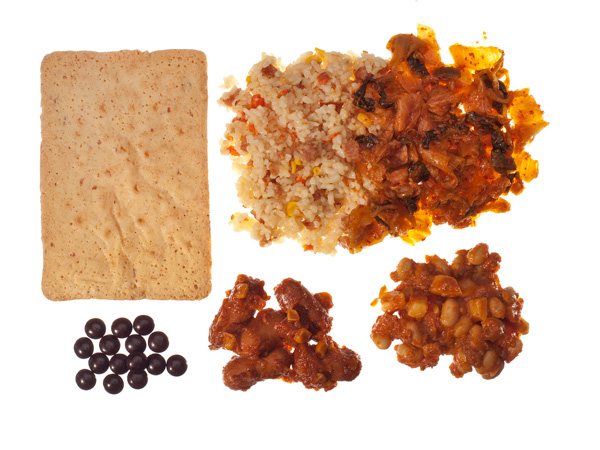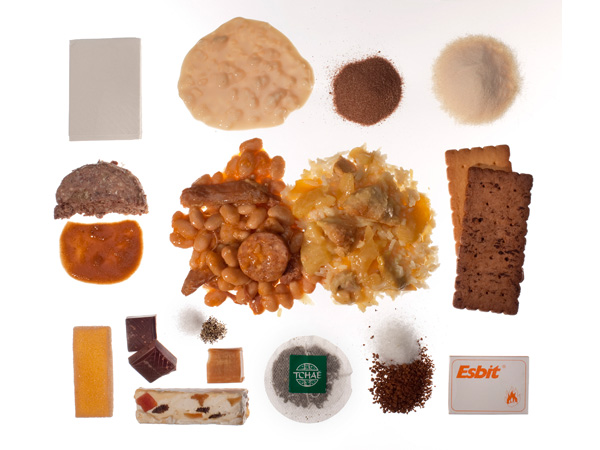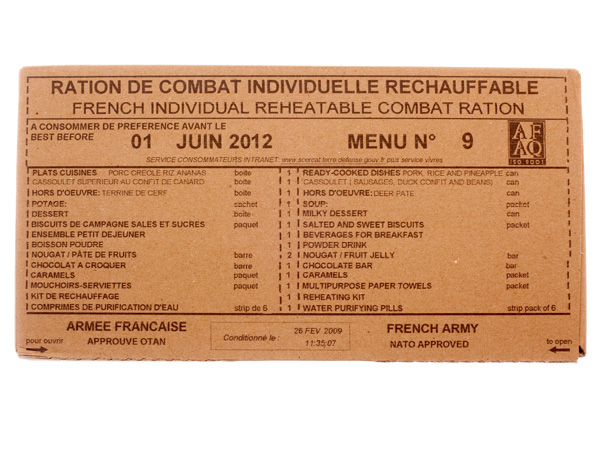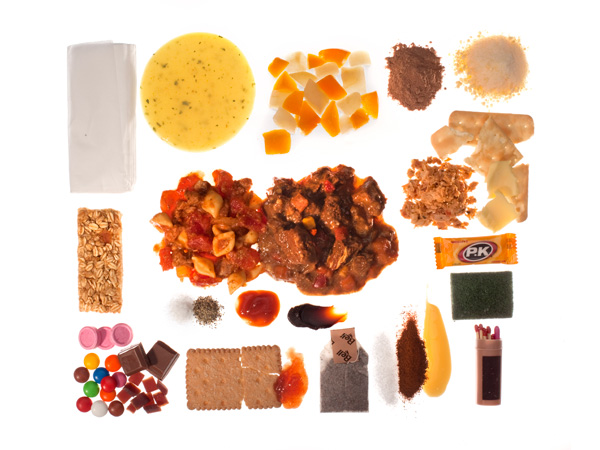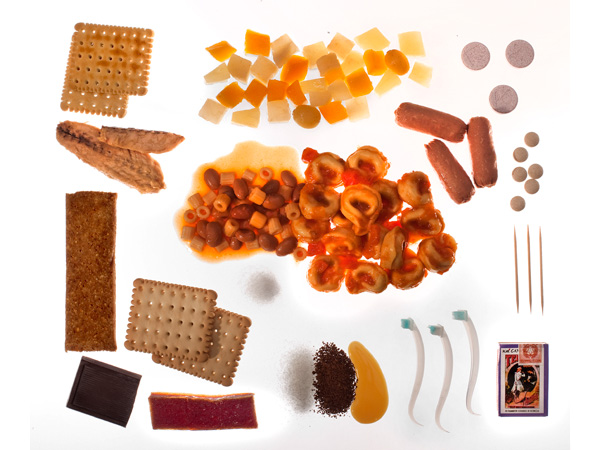Oh Snap!: Which Countries Have the Tastiest MREs?
Oh Snap! is Brow Beat’s weekly photo feature. Have you spotted a project that’s worth profiling? Pitch to ohsnapidea@gmail.com.
For a soldier whose days range from boring to death-defying, opening and consuming an MRE (meal, ready to eat) is a reliable ritual. Its contents, created to last for at least five years, are meant to comfort as well as nourish. M & M’s are a taste of home for American troops, while Germans get Stimorol chewing gum and Italian troops receive three toothbrushes and three toothpicks with each meal.
“They are obsessed with their dental hygiene,” explains photojournalist Ashley Gilbertson, of the photo collective VII.
Gilbertson, who has eaten hundreds of MREs alongside the troops during his years as a war photographer, documented these and dozens of other carefully packaged meals for his photo series “Military Rations of Troops in Afghanistan.” This is the fuel behind the war that turned ten on Friday.
A good soldier knows how to mix and match and trade to create something he or she finds edible. At Bagram Airfield in Afghanistan, where Americans work side by side with troops from around the world, one might spot a Swede swapping cod stew for Canadian steak, or a British soldier trading lamb curry for German chocolate.
French MREs used to have such culinary cachet, Gilbertson says, that five American meals was considered a fair trade for just one. Venison pâté, biscuits, and caramels got old, however, and eventually American meals were more in demand.
Photographing MREs may seem like a straightforward task, but it required a great deal of coordination. Although U.S. and British meals are available for order online, some countries, such as Australia and Italy, are secretive about their indestructible military meals. Gilbertson eventually secured both, relying on the network of contacts he’s developed covering war for years. In the case of the Australian MRE, he was helped by a general at the embassy in Canberra, and a box with barbecue beef and plum spread arrived at his studio in New York via diplomatic messenger.
What was the secret they didn’t want him to learn? It’s not clear. The only revelation he had after a post-shoot taste test was that Vegemite is nasty in any form. (Gilbertson is Australian himself, and has family ties to the inventors of Vegemite, so this, for him, is near sacrilege.)
I asked Gilbertson what a photographer who has spent years in Iraq and covered battles in Karbala, Samarra, and Falluja, is doing with a food stylist in a carefully lit studio.
“I’m trying to find a different way to present the fact that we’re still at war,” he told me. Though the bulk of his work these days consists of photographing soldiers suffering from PTSD and documenting the bedrooms of those who have died serving the U.S. in Iraq and Afghanistan, he hopes this project will engage people in a different way.
It’s a clever tactic. Photographs of food tend to go down easily—even when paired with a nasty, hard-to-process war.
Watch Gilbertson talk about his project in this VII video and see additional photos of the MREs.

